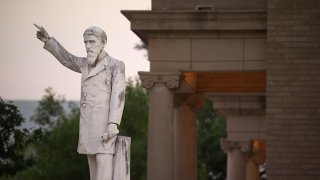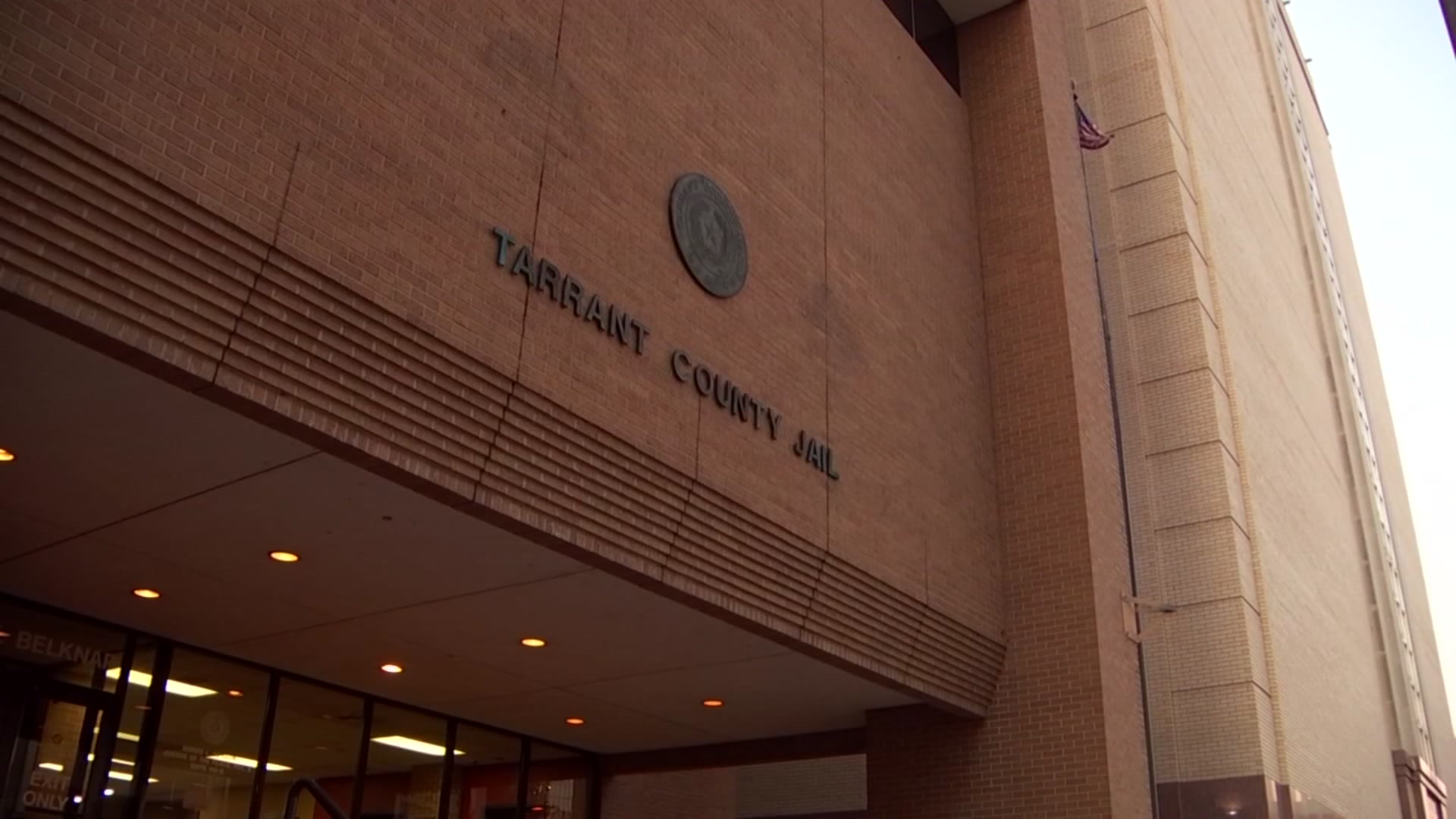
The McKinney City Council is tabling a decision on whether to move a marble statue of former Texas governor, Civil War brigadier general and U.S. Rep. James Throckmorton.
With a 4-3 vote Tuesday, the McKinney City Council decided to take no action and to dedicate more time to decide on the future of the controversial statue.
Angela Woods Richardson, who was appointed to the District 1 seat in December to fill the seat vacated by recalled councilman La'Shadion Shemwell and is the first Black woman to sit on the council, said the time had come for action and expressed her desires that there not be any further delays in removing the statue.
District 3 Councilman Scott Elliott and Mayor George Fuller agreed with Woods.
Get DFW local news, weather forecasts and entertainment stories to your inbox. Sign up for NBC DFW newsletters.
However, according to a statement from the city, at-large councilman Frederick Frazier had questions about how the statue, which is apparently not owned by the city, would be removed and where it would go and he made a motion to table the item to another meeting. He was seconded by City Councilman Rainey Rogers and supported by councilmembers Charlie Phillips and Rick Franklin.
With the vote, the future of the statue was tabled until an unspecified date in the future.
Support for removing the statue grew last summer and, in July 2020, the City Council appointed 11 people to an Ad Hoc Advisory Board to advise staff in performing research related to the context, appropriateness, and relevancy of the Throckmorton statue. The end goal was to then provide an outlet for community engagement and present the City Council with research and options for the statue.
Local
The latest news from around North Texas.
A public survey was held in September 2020 and, according to the council, the majority of people who took part favored keeping the statue in place. Of the 2,094 participants in the survey, 85% were residents of McKinney; both residents and non-residents were in favor of keeping the statue where it was in the city square.
Who Was James Throckmorton?
The Throckmorton statue is drawing criticism for his ties to the Confederacy and refusal to support the 14th Amendment, a position which ultimately had him removed from the Texas governor's office during Reconstruction.
According to the Texas State Historical Association, Throckmorton was a doctor and lawyer from Tennessee who settled in Collin County and was elected a state senator in the 1850s.
Although a Unionist who opposed succession before the Civil War, "he joined the Confederate Army when war came and eventually served as brigadier general in charge of troops guarding the Texas frontier, and Confederate commissioner to the Indian," according to the Texas State Library and Archives Commission.
During Reconstruction, Throckmorton was elected Governor of Texas but was removed from office in 1867 for failing to support the 14th Amendment, which guaranteed citizenship and equal rights to Black Americans and other slaves emancipated in the war. Throckmorton disagreed with the deployment of U.S. military soldiers into the interior of the state rather than on the frontier and he was accused of failing to punish crimes against Blacks and Unionists and was described as "an impediment to reconstruction."
After being ousted from the governor's chair, Throckmorton was prohibited from holding public office until the passage of the General Amnesty Act of 1872. It was then that he returned to public office, this time as a member of the U.S. House of Representatives. He served four terms, in Texas' 3rd and 5th districts, but declined to run again in 1888 due to his poor health. Throckmorton died in 1894.
The controversy surrounding Confederate monuments was renewed in the summer of 2015 when Dylann Roof slaughtered nine Black church members who had welcomed him to their Bible study. Roof told the FBI he wanted to bring back segregation or perhaps start a race war with the slayings, but instead, the single biggest change to emerge from the killings was the removal of the Confederate flag from the South Carolina Statehouse where it had flown for 50 years.
Since Roof's attack, the Southern Poverty Law Center said at least 138 statues and symbols of the Confederacy, including statues, parks, roads and school names, have been removed, including several in North Texas.



